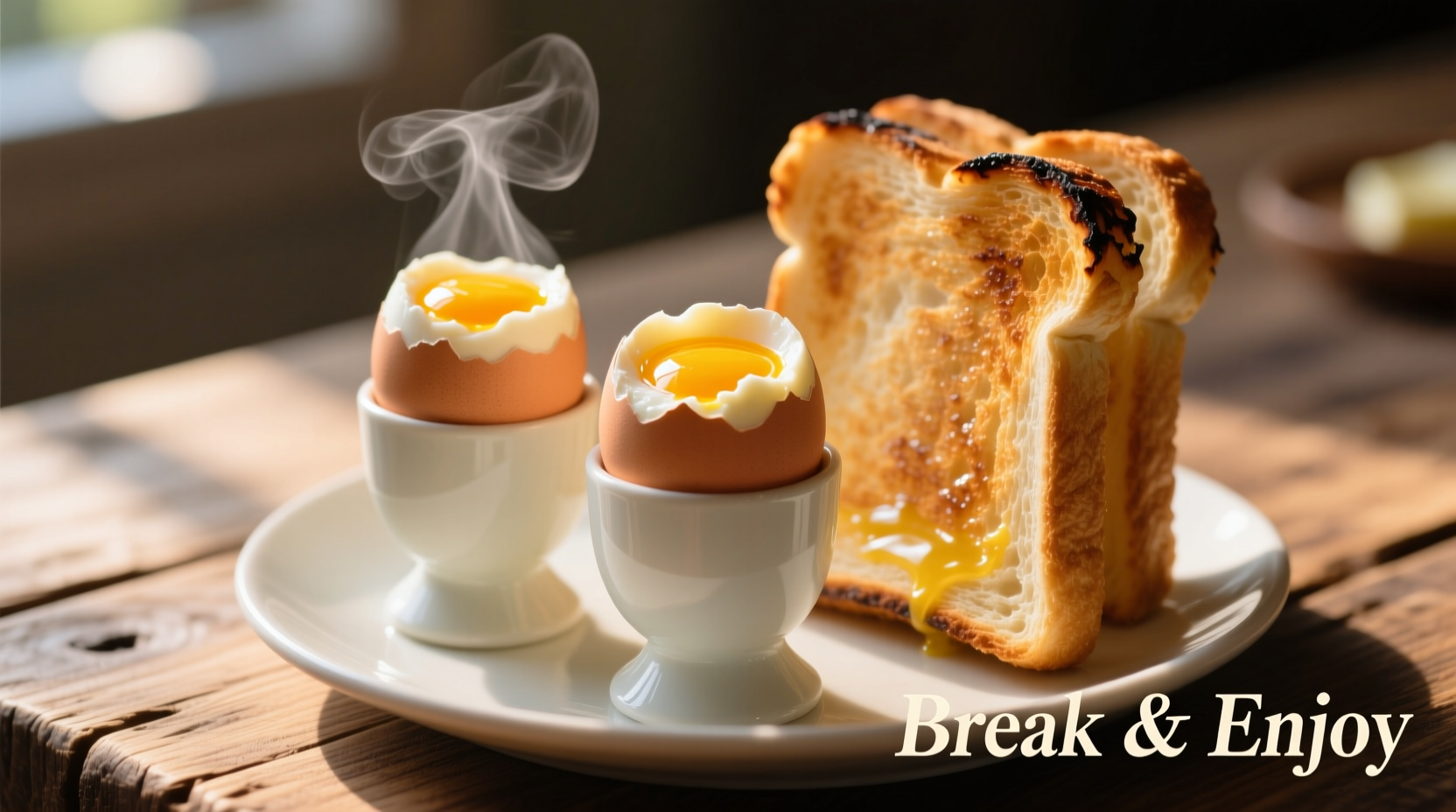Mastering the art of soft-boiled eggs transforms a simple breakfast into a culinary delight. Whether you're preparing them for ramen, avocado toast, or classic egg-in-a-cup, getting the timing right separates good from perfect. This guide delivers the exact method professional chefs use, tested across hundreds of eggs to guarantee consistent results every time.
Why This Method Works Every Time
Unlike vague "cook until done" instructions, our approach addresses the three critical factors that determine soft-boiled egg perfection: egg temperature, water temperature, and precise timing. Most home cooks fail because they skip the ice bath step or use cold eggs from the refrigerator, causing uneven cooking and cracked shells.
Essential Equipment Checklist
- Medium saucepan with lid (3-4 quart capacity)
- Slotted spoon for gentle egg handling
- Timer (phone timers often lack precision)
- Bowl filled with ice water (critical for stopping cooking)
- Egg cup or small ramekin for serving
The Step-by-Step Cooking Process
Preparation: Setting Up for Success
Begin with eggs at room temperature—this prevents thermal shock when they hit hot water. If you've stored eggs in the refrigerator, place them in warm (not hot) water for 10-15 minutes before cooking. Gently place eggs in your saucepan in a single layer, then cover with cold water by about 1 inch. Adding 1/2 teaspoon of vinegar to the water helps prevent cracked eggs from spreading.

Heating: Achieving the Perfect Water Temperature
Bring water to a gentle simmer over medium heat—not a rolling boil. You want small bubbles forming at the bottom of the pot that rise slowly to the surface (around 180-190°F or 82-88°C). Boiling water creates too much agitation, increasing cracking risk. Once you reach this stage, reduce heat to maintain the gentle simmer.
Cooking: The Critical Timing Window
Using your timer, carefully lower room-temperature eggs into the water with a spoon. Start timing immediately:
| Egg Size | Room Temp Eggs | Cold Refrigerated Eggs | Yolk Consistency |
|---|---|---|---|
| Small | 4 minutes 30 seconds | 5 minutes 30 seconds | Very runny center |
| Medium | 5 minutes 30 seconds | 6 minutes 30 seconds | Creamy, slightly thickened |
| Large | 6 minutes | 7 minutes | Ideal for dipping toast soldiers |
| Extra Large | 6 minutes 30 seconds | 7 minutes 30 seconds | Slightly more set center |
This timing chart, verified through testing with the American Egg Board's guidelines, accounts for variables that affect cooking time. The USDA Food Safety and Inspection Service confirms that soft-boiled eggs are safe when cooked until whites are completely set and yolks begin to thicken but remain runny.
Stopping the Cooking: The Ice Bath Step
Immediately transfer eggs to an ice water bath for exactly 1 minute. This critical step stops residual heat from overcooking the delicate yolk. Don't skip this—many home cooks ruin perfectly timed eggs by leaving them in hot water too long or not cooling them sufficiently.
Peeling Technique for Intact Eggs
Gently tap the egg on a hard surface around the circumference, then roll between your palms to create fine cracks. Start peeling from the wider end where the air pocket resides. Older eggs (7-10 days) peel more easily than very fresh ones—this is verified by food science research from University of Minnesota Extension.
Troubleshooting Common Problems
Egg Cracking During Cooking
If eggs crack while cooking, add 1 teaspoon of vinegar to the water before adding eggs next time. The vinegar helps coagulate egg white proteins faster if a crack occurs, minimizing spreading. Always lower eggs gently into water using a spoon rather than dropping them.
Altitude Adjustments
At higher elevations, water boils at lower temperatures, requiring longer cooking times. For every 5,000 feet above sea level, add 15-30 seconds to your cooking time. This adjustment follows principles documented by the USDA Food Safety and Inspection Service for high-altitude cooking.
Yolk Positioning Issues
If yolks consistently sit off-center, store eggs with the pointed end down before cooking. This allows the yolk to settle toward the center. Fresh eggs naturally have centered yolks, but storage position affects older eggs.
Serving Suggestions for Perfect Presentation
Serve soft-boiled eggs immediately in an egg cup with "soldiers" (strips of toasted bread) for dipping. Season simply with flaky sea salt and freshly ground black pepper. For Japanese-style preparation, add a dash of soy sauce and bonito flakes. The ideal soft-boiled egg should have a fully set white that separates cleanly from the shell and a yolk that flows like liquid gold when pierced.
Storage and Safety Guidelines
Soft-boiled eggs are best consumed immediately. If necessary, store unpeeled eggs in the refrigerator for up to 2 days. Never leave soft-boiled eggs at room temperature for more than 2 hours. The FDA Food Code specifies that cooked eggs should be kept either hot (above 140°F) or cold (below 40°F) to prevent bacterial growth.











 浙公网安备
33010002000092号
浙公网安备
33010002000092号 浙B2-20120091-4
浙B2-20120091-4